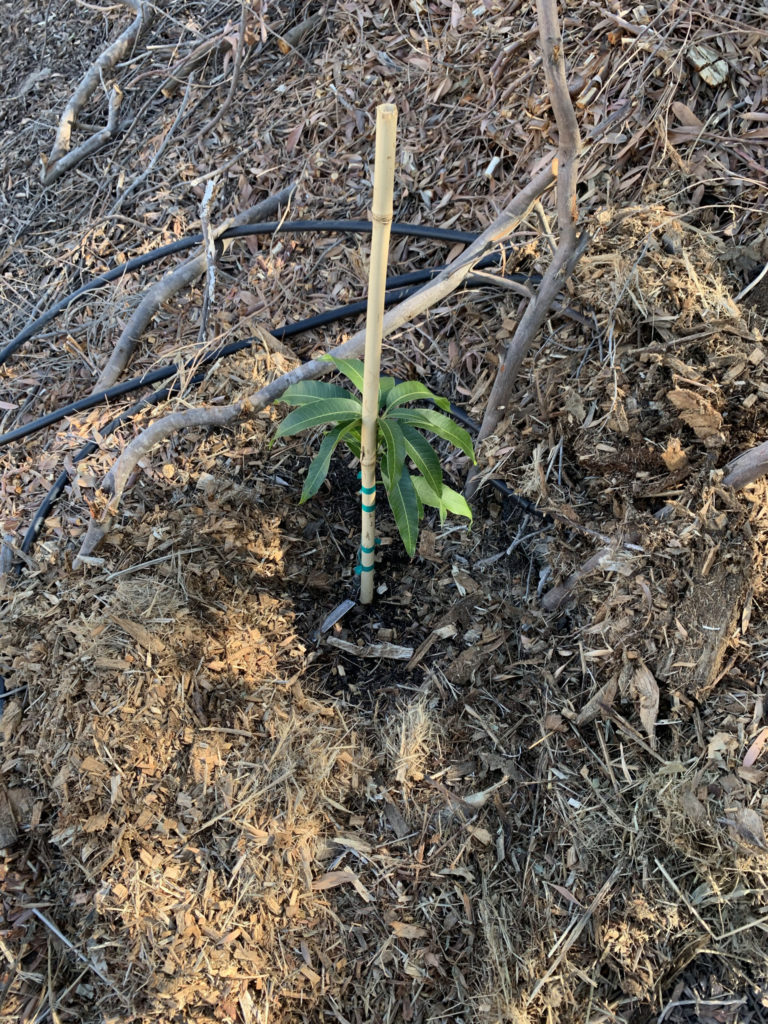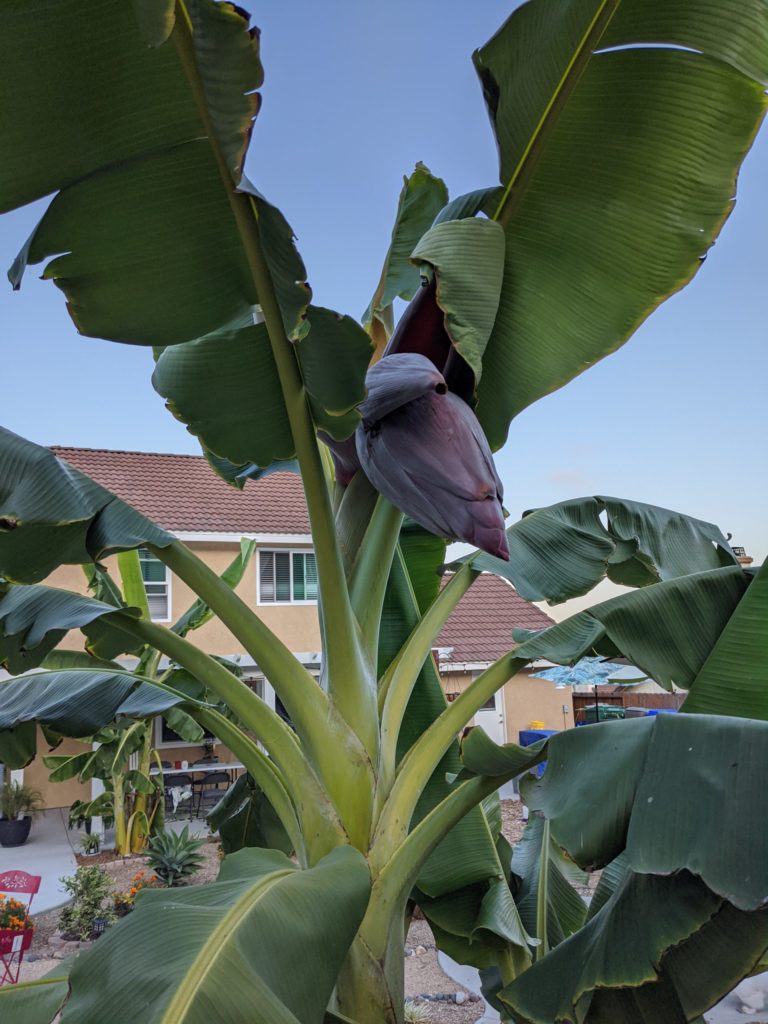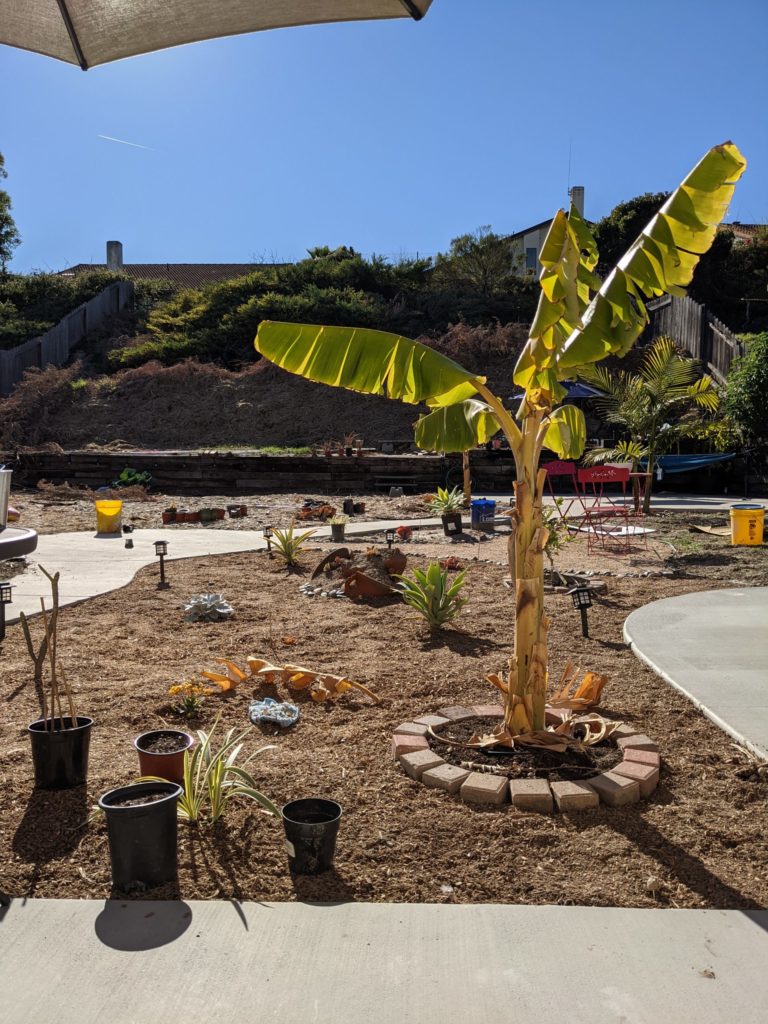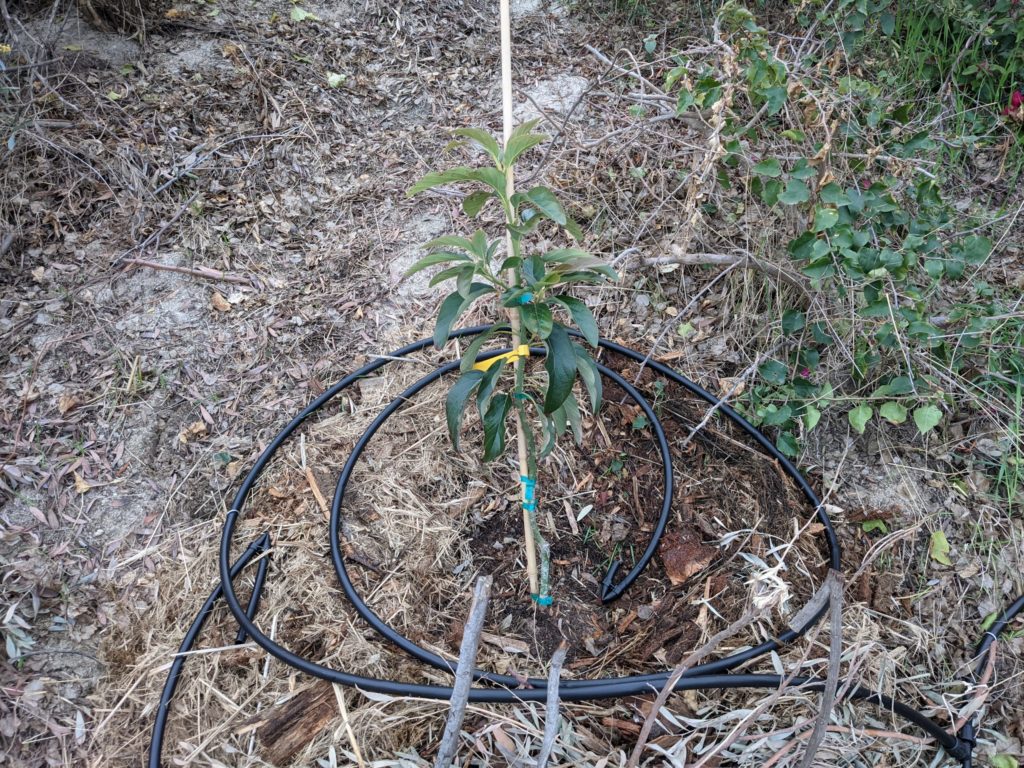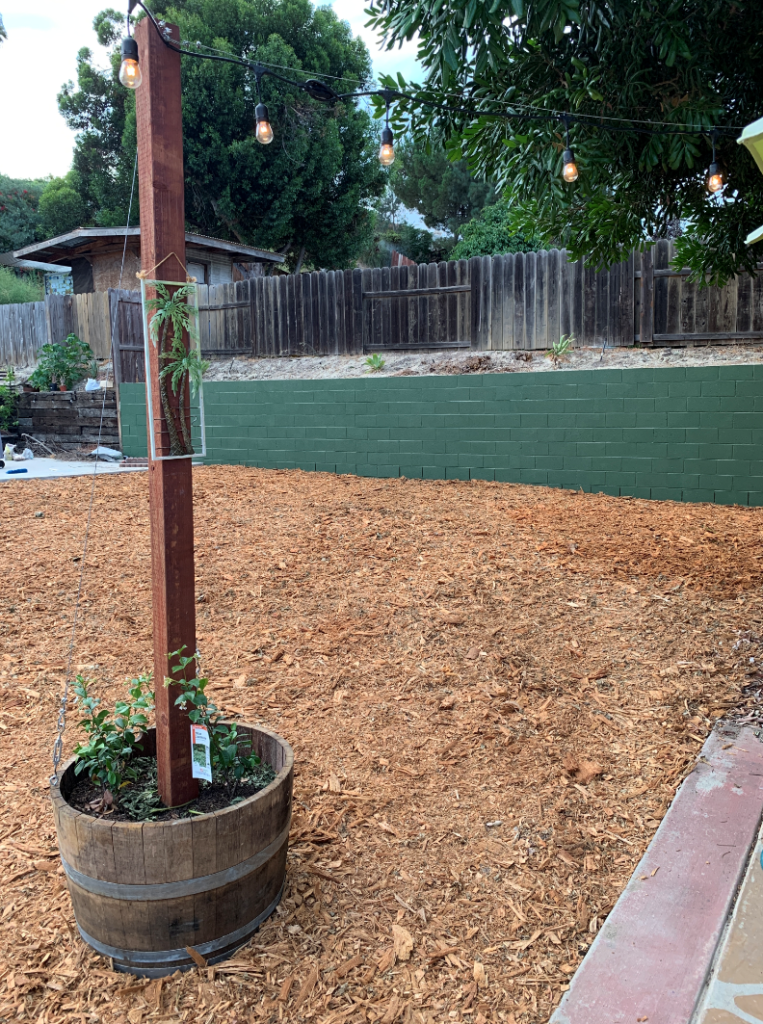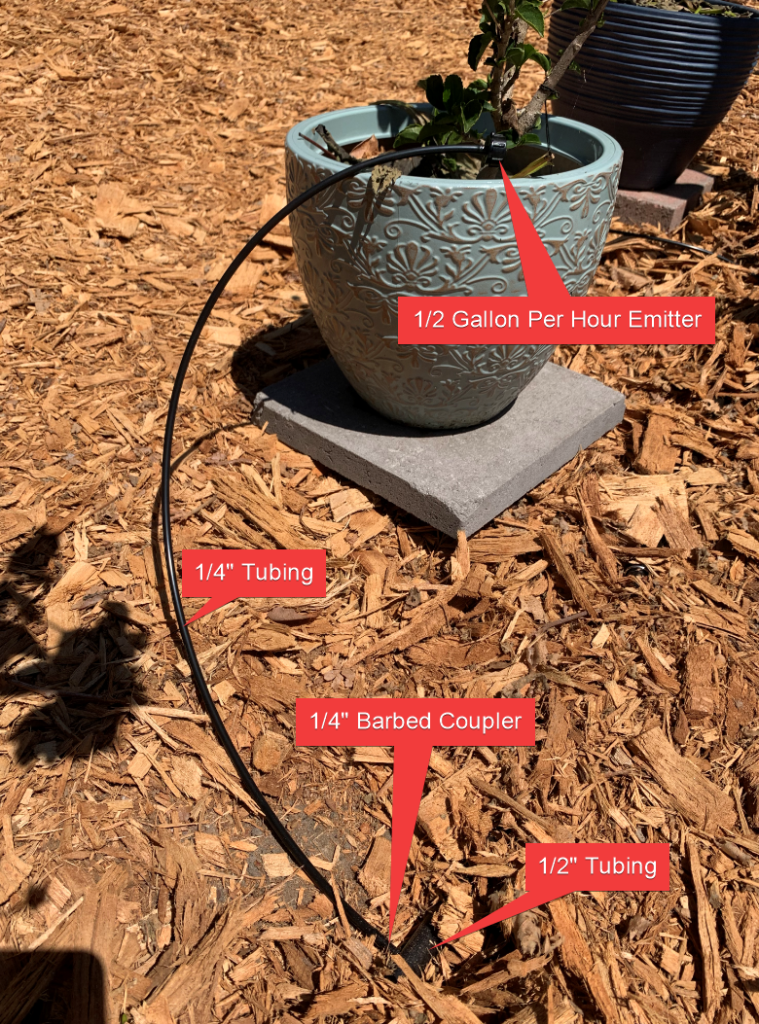The house we live in used to have a backyard with a well planned and defined planting area with shrubs and trees separated from the grass. The shrub area bordering the fence, as well as many other areas throughout the yard, used red lava rock as a ground cover. I don’t know this because I’ve seen pictures, I know this because the evidence of the ground cover is embedded in the soil all throughout the yard.
Leaving all of the red lava rocks in the soil is less than ideal. It creates barriers for plant roots and makes digging a frustrating exercise. So something had to be done to separate the rocks from the dirt. As mentioned the soil around my house is heavy clay soil and when it dries it turns to concrete, and when wet it clumps together readily. This makes traditional sifting with a big flat sifter nearly impossible without wasting tons of water. If I lived in a water abundant area, I would simply shovel a ton of soil on to a flat sifter and hose it down until only the rocks remained on top of the mesh grate. Unfortunately for me, I do not live in a place with water to waste.
My wife did some Googling and found a trommel with instructions on how to create one for yourself. Thanks to Mike’s Trommel I was able to purchase the parts needed and create one myself. I have been using this trommel on and off to sift out the rocks from my soil and dispose of them. I am going to copy and paste the instructions below just in case his website ever goes offline.
| Benefits: Light Shortens dry-washer run time Helps dry damp material for dry-washer Classifies so material carried to dry-washer or sluice is not large, heavy rocks Inexpensive Excellent worm harvester and compost sifter / screener Tumbling shakes and separates gold from rocks (higher yield) Compacts for easy storage up on end or light enough to hang on the wall Built from easily available materials Can be used for gardening / composting / aggregate classification Readily replaceable parts Quickly classifies large quantities of material Take many buckets of classified material home to work Sturdy and weather proof Is adaptable to high banker, hanging sluice, and recirculating water use Allows material to be re-run as many times as necessary Plans are free (the right price!) Email if you need assistance No electrical or gas engine parts Turns effortlessly Ergonomically designed with an upgrade idea available below Saves buckets from early death due to rocking bucket type classifiers Can be used by yourself or accommodates teamwork You don’t get tired or sore from rocking buckets or shaking classifying screens It’s also fun to build! |
| Parts: 2 Five Gallon Buckets (.75 mil or greater gauge) 1 Roll #19 gauge 1/2″ Mesh Hardware Cloth Screen (or woven is better if you can find it) 20′ X 1″ PVC Pipe 6 PVC 1″ Elbow Fittings 5 PVC 1″ Cap Fittings 1 PVC 4 X 1″ Cross Fitting 5 PVC 1″ T Fittings 1 PVC 1″ Coupling Fitting 4 HYCO 12″ Pipe Strap Bar 2 Bags #8-32 X 1/2″ Machine Screws (comes 8 pack) (need 16 bolts with nuts) 1 Bag #8 Washers (comes 30 pack) (need 16 #8 washers or larger fender washers) 2 Bags #10-32 X 2″ Machine Screws (comes 4 pack) (need 8 bolts with nuts) 1 Can PVC Cement 3 Hose Clamps 1 3/4″ (Optional) 1 Old Bicycle Tube (Optional) |
| Tools: Drill and Bits Sabre Saw Screw Driver PVC Cutter or Hack Saw Tin Snips Needle Nose Pliers 1/2 round File or 1 3/8″ hole drill Tape Measure Emery Cloth or Sand Paper |
| Directions: Cut 11 pieces 1″ PVC X 6″ Spacers. Cut 1 piece 1″ PVC X 41 1/2″ Axle. Cut 2 pieces 1″ PVC X 29″ Sides. Cut 2 pieces 1″ PVC X 14″ Front Legs. Cut 2 Pieces 1″ PVC X 21″ Rear Legs. Cut buckets 7″ from top. Cut bottoms from buckets to leave material for hopper. Cut screen 24″ X 39″ leaving long wire ends on sides to connect by bending. Attach wire screen to outside of upper bucket and inside of lower bucket using 4 bolts with washers. Cut 8 Strap Bars 6 ” long and bend 1/2″ at ends to 90 degrees which leaves a distance of 5″ from axle to bucket. Drill offset axle holes at 90 degrees about 4″ from front axle end and bolt barrel supports. Drill offset axle holes at 90 degrees about 13″ from rear axle end and bolt barrel supports. Glue the coupling to rear axle. Assemble and glue handle assembly using cap, three six inch pieces, and two elbows. Sand 2″ of forward axle to easily fit “T.” Connect and bolt axle to barrels checking for 1/2″ clearance at front. Bearings are front “T” fitting and rear 4 X 1″ Cross fitting. They are drilled, liberally lithium greased, and bolted, not glued so they can easily be replaced when worn out. File or drill the inside of 1″ X 4 fitting until handle assembly slides easily though to connect to axle’s coupling. Assemble frame and check for clearance. Do not glue legs to “T” fittings on frame. In the future legs can be stored inside of trommel or bungeed to stay in place. Glue frame and set legs slightly outward for added stability. Slide handle assembly through greased rear bearing and into coupling. Drill and bolt handle assembly to coupling and also where bearings attach frame. Cut each remaining bucket material down the side from top to bottom. Overlap the two pieces by 2″. Drill 5 holes then bolt together. (Or buy another bucket and use half to have a smooth hopper slide.) Drill and bolt the hopper assembly to frame checking for clearance from struts and close fit so rocks can’t slide under the hopper. Trim using snips being sure to round edges where it enters barrel. Optionally attach bicycle tube dust shields (highly recommended to prevent wear.) |
